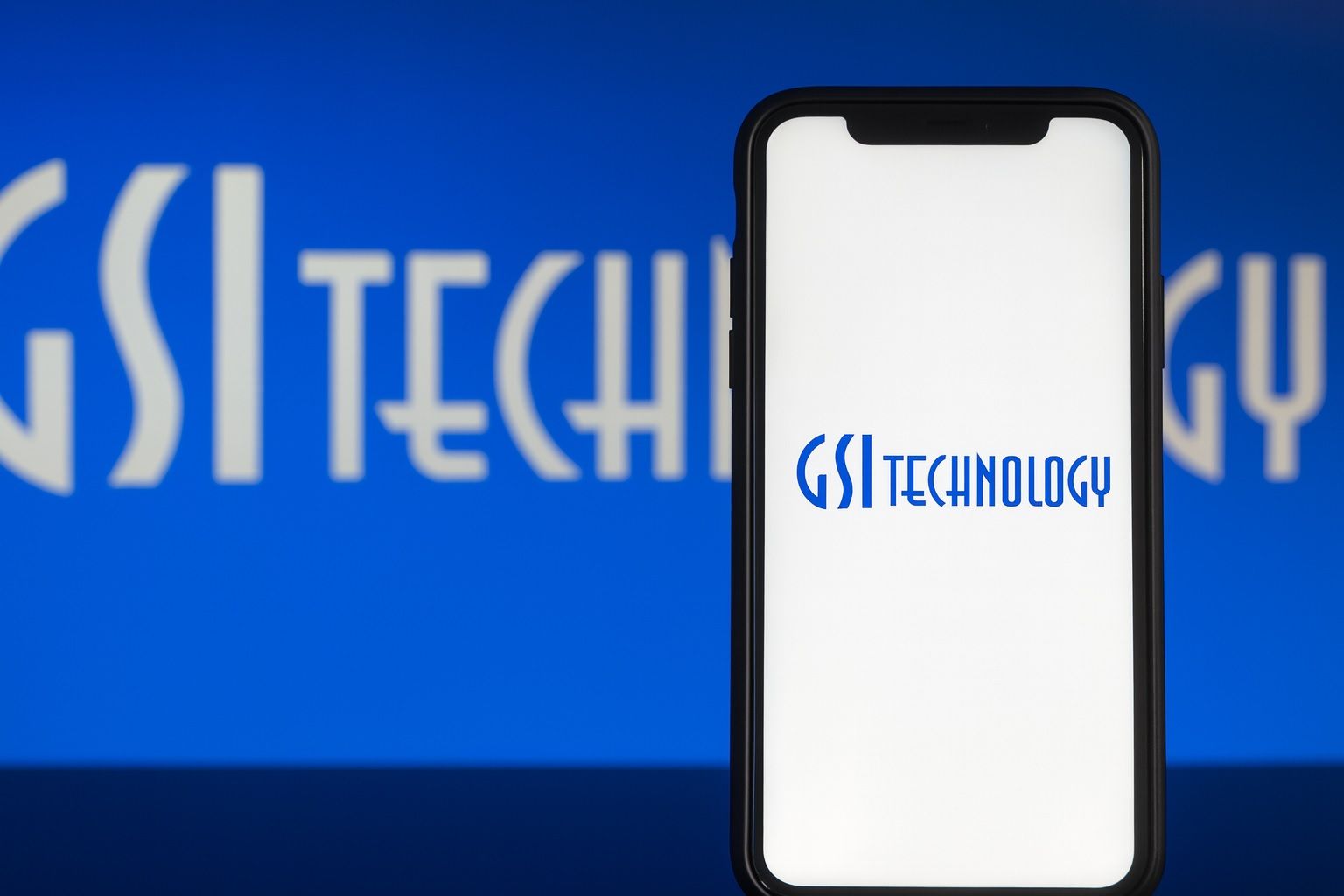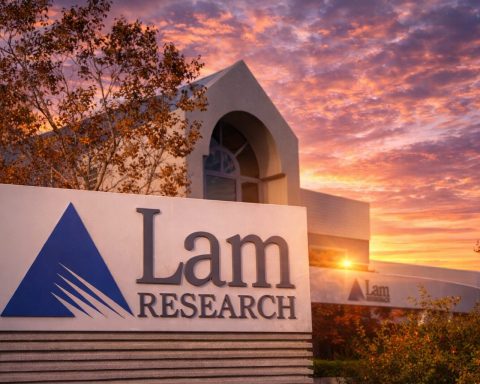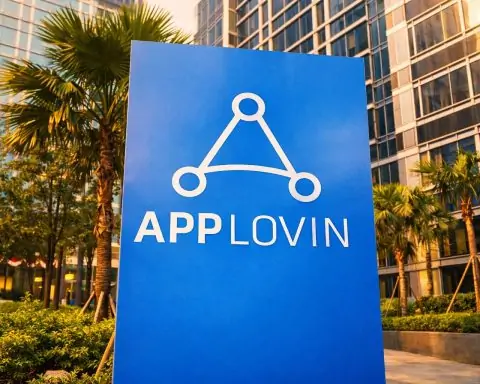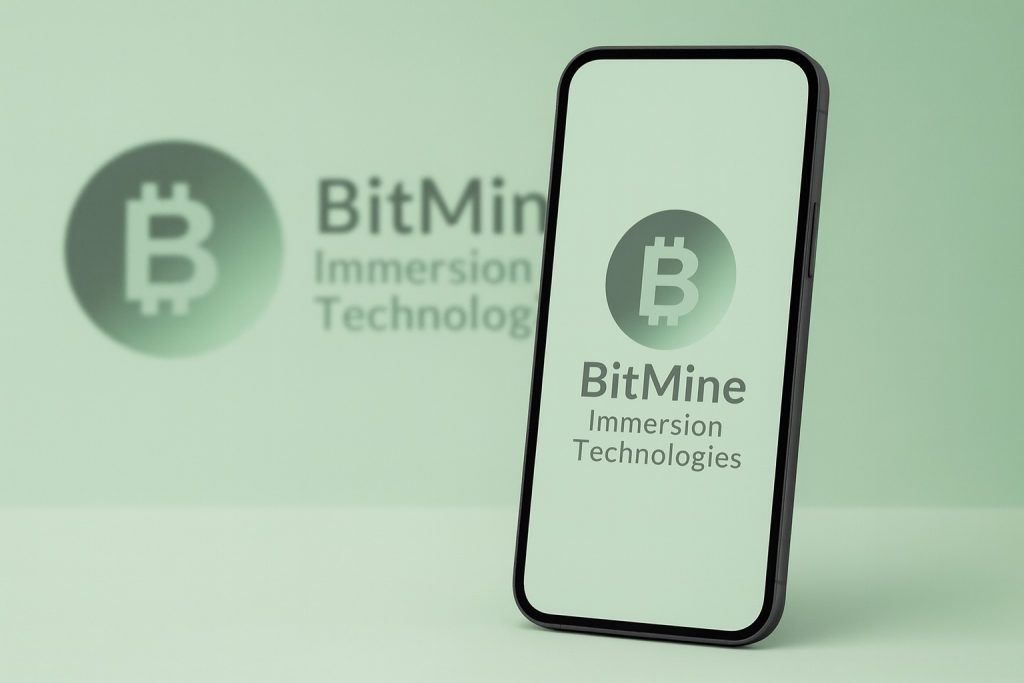- Skyrocketing Stock: GSI Technology’s share price surged nearly 200% intraday on October 20 after news of a major AI chip breakthrough, shooting from about $5 to a $17.48 peak before closing up 155% at $12.97 [1].
- Volatile Week: After the spike, GSIT pulled back but still closed at $9.23 on Oct 24, 2025 (Friday) – roughly 80% higher than its pre-rally price a week earlier [2] [3]. The stock remains up ~150% over the past month and around +200% year-to-date, reflecting its drastic run-up despite recent cooling.
- Capital Raise & Cash Boost: GSI quickly capitalized on the rally by raising $50 million in a direct stock offering at $10 per share (plus warrants) to a single institutional investor [4] [5]. This cash infusion strengthens its balance sheet for AI chip development, though the dilution led to a one-day stock drop of ~11–19% after the announcement [6] [7].
- AI “GPU-Killer” Validation: The frenzy was sparked by Cornell University’s validation of GSI’s new Gemini-I Associative Processing Unit (APU). The study showed GPU-level AI performance with 98% lower energy use on large language model tasks [8]. GSI’s “compute-in-memory” chip completed AI inference jobs as fast as an NVIDIA A6000 GPU while using a fraction of the power [9], marking a potential paradigm shift in energy-efficient AI hardware.
- Analysts Urge Caution: Despite the breakthrough, Wall Street remains skeptical. GSI is a tiny small-cap (~$150–$200M) with only ~$22M annual revenue and ongoing losses (net margin ~–63% as of 2025) [10]. Weiss Ratings reiterated a “Sell” (D–) on GSIT [11] [12], and MarketBeat reports the sole analyst coverage also at “Sell.” Technical models likewise warn the stock is “very high volatility” and was extremely overbought after the spike [13]. Some even predicted a sharp retracement toward ~$5 absent further news [14].
- Outlook – High Hopes vs. High Risk: Bulls argue the Cornell validation cements GSI’s long-term potential in a booming sector (edge AI chips), now bolstered by ~$50M in new capital for R&D. Bears counter that commercial traction is unproven – GSI has no significant APU sales yet, and even insiders sold shares earlier this year around $3–4 [15]. The upcoming earnings report on Oct 30, 2025 is a crucial catalyst [16]: investors will watch for any early customer wins, defense contracts, or guidance that suggest the “GPU-killer” tech is translating into orders. Absent tangible progress, the stock’s wild ride could reverse as quickly as it rose.
Cornell AI Chip Breakthrough Ignites a Buying Frenzy
GSI Technology’s “Gemini-I” APU – a novel Associative Processing Unit that performs AI computations directly in memory – received independent validation from a Cornell University-led study unveiled on Oct 20 at the MICRO’25 conference [17]. Researchers confirmed GSI’s chip can deliver performance on par with a high-end NVIDIA GPU for certain artificial intelligence tasks, while using roughly 98% less energy [18]. In large-scale tests of retrieval-augmented generation (a challenging AI workload), the Gemini-I APU achieved throughput comparable to an NVIDIA A6000 GPU but with a tiny fraction of the power draw [19]. It also ran these AI tasks up to 5× faster than a standard CPU, dramatically cutting processing times [20].
This breakthrough validation electrified investor interest in GSI. The idea that a small company’s chip could rival Nvidia’s performance while solving the AI industry’s power consumption crisis tapped into a hot narrative. (As Nature recently noted, AI’s “energy hunger” is a growing crisis, creating demand for hardware that can do more with less power [21].) GSI’s technology, by computing inside memory arrays (a “compute-in-memory” architecture), avoids the data transfer bottlenecks that slow down GPUs and waste energy [22].
GSI’s CEO Lee-Lean Shu hailed Cornell’s independent tests, saying they “confirm what we’ve long believed – compute-in-memory has the potential to disrupt the $100 billion AI inference market”, delivering “GPU-class performance at a fraction of the energy cost” [23]. In other words, the company claims its approach could be a game-changer for AI deployments where power is limited (think drones, satellites, battlefield AI, edge devices, etc.).
On top of that, GSI has a second-gen chip Gemini-II already designed (taped-out but not yet shipping) that it says will be ~10× faster with even lower latency [24]. The new funds and attention could accelerate Gemini-II’s development. In short, the Cornell news positioned GSI as a potential David vs. Goliath story in AI chips – a tiny firm with a “GPU-killer” solution for an industry hungry for efficiency.
Stock Goes Parabolic, Hits New Highs
The stock market reacted instantly to the Cornell APU news. GSIT shares nearly tripled in one session: on October 20, the stock jumped from ~$5 to an intraday high of $17.48 before closing at $12.97 (+155% for the day) [25] [26]. This astonishing one-day move smashed the stock’s previous 52-week high (which had been around $5), and trading volume exploded from under 1 million shares to over 111 million shares on Oct 20 [27]. The buying frenzy continued briefly into the next morning – in pre-market trading on Oct 21, GSIT hit ~$16+, up another 25% [28] – showcasing the momentum-driven euphoria around this news.
However, such “parabolic” gains often invite volatility. After peaking, GSIT’s stock whipsawed through the week. On Oct 21 (Tuesday), GSI announced a $50M stock offering (details below), which cooled some of the speculative fever. The stock that day pulled back to close around $10.86 [29], down ~16% from Monday’s close (a typical dilution-driven reaction). By mid-week Oct 22, shares rebounded above $12 again intraday as traders continued to jockey for position. Ultimately, profit-taking set in toward week’s end: GSIT closed Friday Oct 24 at $9.23 [30], which is down about 47% from its $17.48 peak but still 80–100% higher than before the Cornell news broke [31] [32].
In the span of five sessions, GSIT went from a relatively obscure $5 stock to a $17 high and back to $9 – a rollercoaster ride illustrating both the massive upside enthusiasm and the extreme volatility of this name. Even at $9.23, the stock is up roughly +150% for the month and about triple its price at the start of 2025, vastly outperforming the broader market. Its 200-day moving average was just $3.84 before this rally [33], highlighting how dramatically sentiment shifted. Traders should be prepared for continued big swings: as of Friday, GSIT’s daily volatility was enormous (on Oct 24 the intraday range was 27% from low to high) [34] [35]. Rapid swings of 20–30% in a day may remain the norm as the stock seeks a stable valuation.
$50 Million Cash Injection – and Dilution
Amid the post-Cornell frenzy, GSI Technology moved quickly to shore up its finances. On Oct 21, the company announced a registered direct offering to raise gross proceeds of $50 million [36] [37]. In this deal, a single institutional investor agreed to buy about 1.51 million new common shares at $10.00 each, as well as 3.49 million pre-funded warrants (also effectively priced at $10, with a $0.01 exercise price) [38]. The pricing – $10 per share – was roughly a 20% discount to the $12.97 prior closing price, which is not unusual for a PIPE (private investment in public equity) deal. Needham & Co. served as the placement agent [39] [40].
For GSI, this was a major cash infusion – $50M is a significant sum given the company’s small size (its entire market cap was only ~$148M before the offering) [41]. Management indicated the funds will go toward “general corporate purposes, including development of the APU product line” [42] – essentially fueling further R&D and productization of its AI chips. By bolstering its cash reserves, GSI gains more runway to refine Gemini-II, support customer trials, and weather any losses in the near term. In fact, strengthening the balance sheet now may help GSI accelerate its roadmap and signal to potential customers that it has the resources to deliver on ambitious tech.
However, the flip side of any equity raise is share dilution, and the market weighed that accordingly. GSI’s stock fell sharply after the offering announcement – dropping about 11.5% by midday Oct 21 [43] and ultimately closing nearly 19% down that day [44]. The pullback reflected the typical dilution effect (new shares increase the supply and can pressure the price). It also likely signaled some profit-taking by short-term traders who rode the initial spike. The deal’s structure – essentially ~5 million shares worth ~$10 each when including warrants – implied roughly a 30–40% increase in share count if all warrants are exercised. Notably, the institutional investor’s willingness to pay $10 per share could be seen as setting a near-term valuation floor around that level [45] [46]. Indeed, through the week, GSIT stock gravitated toward the $10 mark (bouncing above and below it) as the market digested the news.
With the offering closed (it was slated to wrap by Oct 22 [47]), GSI’s cash position is now much stronger. Before this, the company had a decent balance sheet for its size – as of the last quarter, it had more current assets than liabilities (current ratio ~5.8) and more cash than debt [48] [49]. The extra $50M gives GSI a war chest to fund development and possibly attract partners/clients. This is crucial because the company’s core business was not generating positive cash flow yet (more on that next). By raising money at the height of enthusiasm, GSI mitigated risk of a cash crunch and can now focus on executing its tech roadmap. In essence, the rally gave GSI an opportunity to “cash in” on its stock surge, and it took it – potentially a smart strategic move to seize the moment.
Fundamentals: Tiny Company in a Big Spotlight
GSI Technology is, at heart, still a microcap semiconductor company trying to commercialize a new technology. Founded in 1995 and based in Sunnyvale, CA, GSI historically sold specialized SRAM memory chips for telecom, networking, and military uses [50]. Its foray into AI processors (the Gemini APU line) is recent, and revenues so far remain small. In its fiscal year 2025 (ended March 2025), GSI’s total revenue was around $22 million [51] – hardly a rounding error for industry giants. The company has been running at a net loss; in the latest quarter (Q1 FY2026, quarter ending Sept 30, 2025) it reported revenue of $6.3M (up 35% YoY) but a net loss of $0.08 per share [52] [53]. Gross margins are modest and the new AI chip hasn’t yet contributed meaningful sales. In short, GSI’s current financials do not justify its post-rally market cap by traditional metrics – this is a bet on future potential.
Analysts and experts are therefore approaching GSIT with caution. Because of its small size, GSI has very limited Wall Street analyst coverage – no big banks or research firms regularly track it. The few ratings available are negative. For example, Weiss Ratings (an investment research service) recently reiterated a “Sell (D–)” rating on GSI [54] [55], and MarketBeat’s compilation shows the consensus rating as “Sell” with zero Buy ratings [56]. No major brokerage has issued a bullish target, likely due to the speculative nature of the stock.
Valuation is a big question mark. Even after pulling back to ~$9, GSI’s market capitalization is in the $150–200 million range, which is 8–10 times its annual revenue – a steep ratio for a company with declining legacy sales and no profits. Some independent analysts suggest the stock is far ahead of fundamentals: one analysis noted that retail investor estimates of fair value lie under $1 per share given the company’s financials [57]. (In other words, based on traditional metrics, the stock could be wildly overpriced absent a dramatic jump in revenue soon.) This disconnect underscores that GSIT’s valuation is being driven by technology hype and future hopes, not current earnings.
At the same time, GSI’s balance sheet improvements and the nature of its story do give bulls some talking points. The company now likely has on the order of $60–70M in cash (including the new raise) and minimal debt, which is a healthy cushion for a microcap. Moreover, there are signs of institutional interest: recent filings showed that Bank of America and Osaic Holdings massively increased their stakes in GSI in prior quarters (BofA’s holdings jumped by 8,248%, and Osaic’s by 52%) [58] [59]. This hints that some professional investors had quietly placed bets on GSI’s tech even before the Cornell news. Such holdings now represent about one-third of the company’s shares being owned by institutions [60], which is relatively high for a company of this size and could lend some stability. Nonetheless, fundamentals will eventually need to catch up with the share price for the rally to be sustained.
Hype vs. Reality: Industry Context
Why all the fuss over an energy-efficient AI chip? GSI’s story sits at the intersection of several red-hot tech trends: artificial intelligence, specialized semiconductors, edge computing, and energy sustainability. The broader semiconductor industry is racing to develop chips that can run AI algorithms faster and more efficiently. Nvidia’s GPUs currently dominate AI model training and inference in data centers, but they guzzle power and aren’t optimal for devices out “in the field.” Edge AI – running AI on drones, satellites, vehicles, IoT sensors, and military gear – is a booming market projected to reach $56–57 billion by 2030 [61]. In these environments, power efficiency is paramount: hardware that can deliver AI smarts without draining batteries or requiring big cooling systems has a clear advantage [62].
GSI Technology’s APU is a bold attempt to meet this need with a fundamentally different architecture. By embedding processors directly into memory arrays (SRAM), its chip eliminates a lot of the energy wasted in shuttling data back-and-forth between separate CPU, memory, and GPU components [63]. This “compute-in-memory” approach has been a holy grail in computer engineering, but hard to pull off commercially. GSI appears to have one of the first working solutions demonstrating large-scale AI tasks. This positions GSI as a potential “paradigm shift” player if – and it’s a big if – the technology can be scaled up and adopted by customers [64].
It’s worth noting GSI is not entirely alone in chasing low-power AI chips. Many larger chipmakers and startups are exploring novel architectures. For instance, MediaTek recently revealed a smartphone processor with a specialized compute-in-memory AI unit for lower-power AI in mobile devices [65]. Even giants like Intel are emphasizing power efficiency in next-gen AI chips [66]. This validates the market demand for solutions like GSI’s. The key difference is that GSI is a pure-play in this niche: it’s focusing exclusively on its APU for markets like defense and aerospace (it even secured a U.S. Army R&D contract for edge AI computing) [67]. Unlike Nvidia or AMD, who target cloud data centers, GSI is going after customers who need AI at the edge with tight energy and space constraints [68] [69]. If its chips truly deliver promised gains, GSI could carve out a lucrative niche despite its small size.
Still, turning a tech breakthrough into a business is a challenging road. The compute-in-memory field is unproven in mass production [70]. GSI must convince equipment makers to design in its APU, compete with much larger rivals, and navigate manufacturing at advanced nodes – all difficult for a company its size. The Cornell demo, while impressive, is just one step. As industry observers point out, integrating a new chip into real-world systems involves developing software tools, securing design wins, and proving reliability at scale [71]. These hurdles mean that even if GSI’s tech is great, widespread adoption could be years out (if it happens at all). This context helps explain why investors are excited but also why analysts remain cautious – GSI is operating at the cutting edge, which entails high reward but also high risk.
Forward-Looking: Can GSI Live Up to the Hype?
Going forward, all eyes are on GSI’s execution. The next immediate catalyst is the company’s Fiscal Q2 2026 earnings report on October 30, 2025 [72]. Normally, a microcap’s quarterly report might not draw attention, but this one is different given the recent spotlight. Investors will be parsing the results and conference call for any clues of APU commercialization. Key things to watch for include:
- New Partnerships or Trials: Did GSI sign any pilot programs, beta customers, or partnerships (perhaps with defense agencies or tech firms) to start using the Gemini-I chip? Even a small initial order or a memorandum of understanding could validate that customers are interested beyond academic tests.
- Pipeline & Guidance: Management’s commentary on the sales pipeline for the APU will be critical. Are there active evaluations ongoing with potential big buyers? Any timeline on when Gemini-II might launch to customers? If GSI hints at concrete progress or future contracts, it could keep bullish sentiment alive.
- Financial Runway: Thanks to the $50M raise, GSI’s cash outlook is improved. Analysts will likely ask how long this cash will last at the current burn rate, and whether additional raises are anticipated. With more cash, GSI can afford to invest in marketing and customer support for its chip – investors will want to see a plan for using this capital to drive adoption.
- Legacy Business Update: GSI’s legacy memory chip business (which still makes up most of current revenue) might get less attention, but any stabilization or growth there helps underpin the company. Supply chain improvements or defense orders for its radiation-hardened memory could incrementally aid the fundamental picture [73].
Given the stock’s recent hyper-volatility, investor sentiment could swing on a dime with the earnings news. If GSI delivers even modestly positive surprises – say, announcing a new APU pilot program or reporting an uptick in inquiries – it might reinforce the bull case that real commercialization is on the horizon. In that scenario, some bulls argue the stock’s extreme jump could find support, especially since the company now has cash and validation to back it.
On the other hand, if the earnings reveal no tangible progress on monetizing the APU (for example, if revenue remains purely from legacy products and no new AI deals are mentioned), the market could punish GSIT stock. After a 200% hype-driven surge, any disappointment or even just lack of news can trigger a sell-off as traders rush for the exits. The stock is already off its highs, and skeptics believe it could fall further to reconnect with fundamentals. CoinCodex analysts labeled GSIT at risk of a rapid reversal and even suggested it could revisit ~$5 levels absent fresh drivers [74].
Longer-term, the battle between GSI’s immense promise and its significant challenges will continue to play out. Optimists see a company at the forefront of a potential revolution in AI hardware – if GSI’s chips become standard in, say, defense drones or satellite AI systems, the upside for its stock is enormous. The edge-AI chip market is large and growing, and GSI currently has a first-mover advantage in a niche of that market. As one analyst put it, in AI hardware now “managing power often matters more than raw benchmark scores” [75] – and power efficiency is GSI’s ace card. The company’s roadmap (with the forthcoming Gemini-II and a future concept code-named “Plato”) shows it aiming to stay ahead on performance-per-watt metrics [76]. If compute-in-memory takes off broadly, GSI could potentially ride that wave to become an acquisition target or a multi-bagger stock.
Pessimists, however, highlight that GSI has yet to prove it can convert tech into profits. The company’s history is littered with niche products and it operates in the shadow of industry giants. It will take extraordinary execution for a sub-$200M company to compete in semiconductor development and convince major customers to buy its solution. Moreover, the stock’s retail-fueled spike could lead to a “hangover”: many short-term traders who chased the rally may bail at the first sign of trouble, adding selling pressure. The rally itself, as one report warned, reflects both “opportunity and speculative hype” [77]. Investors should be prepared for turbulence – GSIT could continue to swing wildly with news flow, and it remains a high-risk, high-reward play.
Bottom Line: GSI Technology has burst into headlines with a compelling AI breakthrough that sent its stock on a historic run. The company now enjoys greater visibility, more cash in hand, and a stamp of scientific credibility. Yet, its journey is just beginning. In the coming weeks and months, expect GSIT to trade less on past hype and more on real progress (or lack thereof) in securing deals and revenue. For now, the stock is a volatile wager on a potentially revolutionary chip. Whether this small-cap can turn its 15 minutes of fame into lasting success is the big question on the minds of investors and analysts alike [78].
Sources: Company press releases and SEC filings; Cornell University MICRO’25 conference findings; TS2.tech analysis of GSI’s breakthrough [79] [80]; market data from Nasdaq, Yahoo Finance and StockAnalysis [81] [82]; news reports from Investing.com [83] [84], Economic Times [85], MarketBeat [86], Simply Wall St [87] [88] and others as of October 26, 2025.
References
1. ts2.tech, 2. ts2.tech, 3. www.nasdaq.com, 4. www.investing.com, 5. www.investing.com, 6. www.investing.com, 7. www.investing.com, 8. ts2.tech, 9. ts2.tech, 10. ts2.tech, 11. www.marketbeat.com, 12. www.marketbeat.com, 13. ts2.tech, 14. ts2.tech, 15. ts2.tech, 16. ts2.tech, 17. ts2.tech, 18. ts2.tech, 19. ts2.tech, 20. ts2.tech, 21. ts2.tech, 22. ts2.tech, 23. ts2.tech, 24. ts2.tech, 25. ts2.tech, 26. ts2.tech, 27. ts2.tech, 28. ts2.tech, 29. www.nasdaq.com, 30. www.nasdaq.com, 31. ts2.tech, 32. www.nasdaq.com, 33. www.marketbeat.com, 34. stockinvest.us, 35. stockinvest.us, 36. www.investing.com, 37. www.investing.com, 38. www.investing.com, 39. www.globenewswire.com, 40. www.globenewswire.com, 41. ts2.tech, 42. www.globenewswire.com, 43. www.investing.com, 44. www.investing.com, 45. www.investing.com, 46. www.investing.com, 47. www.investing.com, 48. ts2.tech, 49. ts2.tech, 50. ts2.tech, 51. ts2.tech, 52. ts2.tech, 53. ts2.tech, 54. www.marketbeat.com, 55. www.marketbeat.com, 56. ts2.tech, 57. simplywall.st, 58. ts2.tech, 59. ts2.tech, 60. www.marketbeat.com, 61. ts2.tech, 62. ts2.tech, 63. ts2.tech, 64. ts2.tech, 65. ts2.tech, 66. www.reuters.com, 67. ts2.tech, 68. ts2.tech, 69. ts2.tech, 70. ts2.tech, 71. ts2.tech, 72. ts2.tech, 73. ts2.tech, 74. ts2.tech, 75. ts2.tech, 76. ts2.tech, 77. ts2.tech, 78. ts2.tech, 79. ts2.tech, 80. ts2.tech, 81. ts2.tech, 82. www.nasdaq.com, 83. www.investing.com, 84. www.investing.com, 85. ts2.tech, 86. www.marketbeat.com, 87. simplywall.st, 88. simplywall.st







